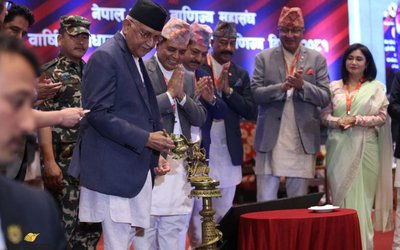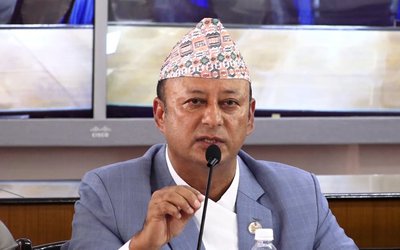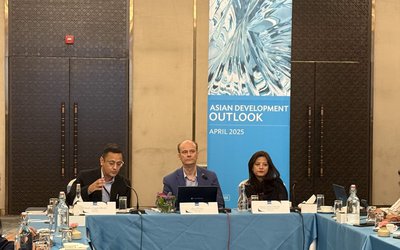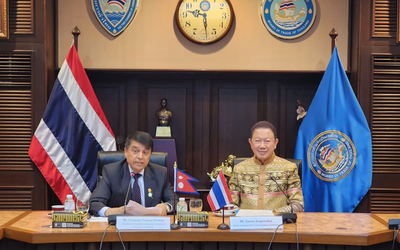
As Nepal is the only foreign country to have a direct road connection with Tibet, with Nepal having another route to go outside, there is a win-win situation for both the countries.
This is how both the countries are benefiting from the bilateral trade. With the linking of railways up to Sigatse from mainland China, the volume of trade between Nepal and China jumped many folds recently.
However, the devastating earthquake of April and subsequent aftershocks destroyed Nepal-China border points, including many portions of roads, disrupting the trade.
As Nepal is in the process of revival and blockade in Southern plain, organizing Nepal China-Tibet Economic and Trade fair had its own significance. After import of oil from Kerung, another trade point between Nepal and China’s Tibet; it opened a wider possibility to increase the bilateral trade.
For centuries Kathmandu valley enjoyed a special trade privilege with China’s Tibet. Kathmandu’s prosperity is directly linked to its surplus trade relations with Tibet.
Jointly inaugurated by Secretary at the Ministry of Commerce and Supplies Naindra Prasad Upadhyay and Dong Mingiun, vice-chair of Tibet Autonomous Region of China, the trade fair has different stalls comprising handicrafts, medicinal herbs and electric products manufactured in both countries on display.
Electric products including induction cookers and electric motorbikes are the main attractions of the fair. These items are being showcased as per the current need of the Nepali market, the Chinese side said.
These kinds of fair have been organized every two years since 1990 under the coordination at the government level. The Chinese side has informed that they have brought different goods worth 4.7 million yuan for this year’s fair.
“Nepal has been getting significant support from neighboring country, China, during other times, including at the time of the earthquake,” said Secretary Upadhyay. “Chinese investors can come to invest in agriculture, hydropower, tourism and other infrastructure development sectors of Nepal.”
Highlighting the importance, Vice-Chairman Dong expressed the hope that the fair would also help strengthen the relations at the public level. “Nepal-China Tibet friendly relations were established around a decade ago. This kind of fairs would further contribute in providing modernization to traditional trade existing between the two countries since long as per the changing times.”
Chinese Ambassador to Nepal, Wu Chuntai said that the relations between the two countries were very friendly.”Tibet has been achieving progress in agro production, modern infrastructure development and industrial development in the recent period due to the hard work of Tibetan people,” said Chinese ambassador Wu Chuntai. “Such fairs would help in exchange of experience achieved by both countries in economic development. China has increased its investment in infrastructure development for the development of Nepal-China border areas.”
According to the organizer, the Trade and Export Promotion Centre under the Commerce and Supply Ministry, a total of 52 stalls from China and 22 from Nepal are showcasing a wide range of products at the event.
Chinese exhibitors have displayed electric motorbikes, electric cooking heaters, agricultural products and garments. Similarly, Nepali entrepreneurs have showcased handicrafts, metal crafts, gems and jewelry, pashmina, carpet and medicinal herbs, among other products.
Betty Liu, vice-general manager of Tibet New Summit Motor, said that they were trying to set up an outlet in Nepal. “I think now is the right time to sell electric bikes in Nepal as people are struggling to get petrol. We are looking for a local distributor, and we will start supplying electric and other bikes in the country,” she said, adding that there was a great potential for electric bikes in Nepal.
Despite the drastic drop of Nepal’s trade between China’s Tibet and Nepal following the earthquake, it is gradually picking up. The import and export trade volume between China’s Tibet and Nepal has reached one new high in recent years.
The bilateral trade volume increased on average by 43 percent annually for three consecutive years and hit a record high of 1.94 billion yuan (316.67 million US dollars) in 2013, according to official statistics.
In August 2015, Chinese companies had signed a deal worth of 3.3 billion US dollars with Nepal for the rehabilitation and reconstruction works of Nepal.
New Silk Road was started in 2013. It is for promoting economic cooperation and strengthening peace among the nations, the Road and Belt concept will also enhance passage to various countries for the betterment of the people. No doubt, Nepal is also one of the very important countries on this One Road One Belt project.
Chinese too agree that Nepal-China trade indicators are ascending towards imbalance. China recently issued zero tariff policy for 70 per cent of the Nepalese goods to promote Nepal’s trade with China. China has already repaired the road on its side near border to make access easy.
According to the report, Nepal recorded a trade deficit of 53215.10 million Nepali rupees in December of 2014. Balance of Trade in Nepal averaged -21005 million Nepali rupees from 2001 until 2014, reaching an all-time high of -3913.30 Nepali rupees in October of 2001 and a record low of -60293.70 million Nepali Rupees in August of 2014.
Given the present trends, Nepal China-Tibet Trade fair is very significant and it will have a long implication for the bilateral trade and diversification of trade between the two countries.
- IME GROUP: Expands Into Paper Industry
- Mar 24, 2025
- CPN UML: Instigated By India
- Mar 23, 2025
- ADB’S CHIEF ECONOMIST: Nepal Reduces Poverty
- Mar 11, 2025
- FM DR. DEUBA: A Successful Visit
- Mar 11, 2025
- MD GHISING: Target Of Personal Grudge
- Mar 09, 2025















